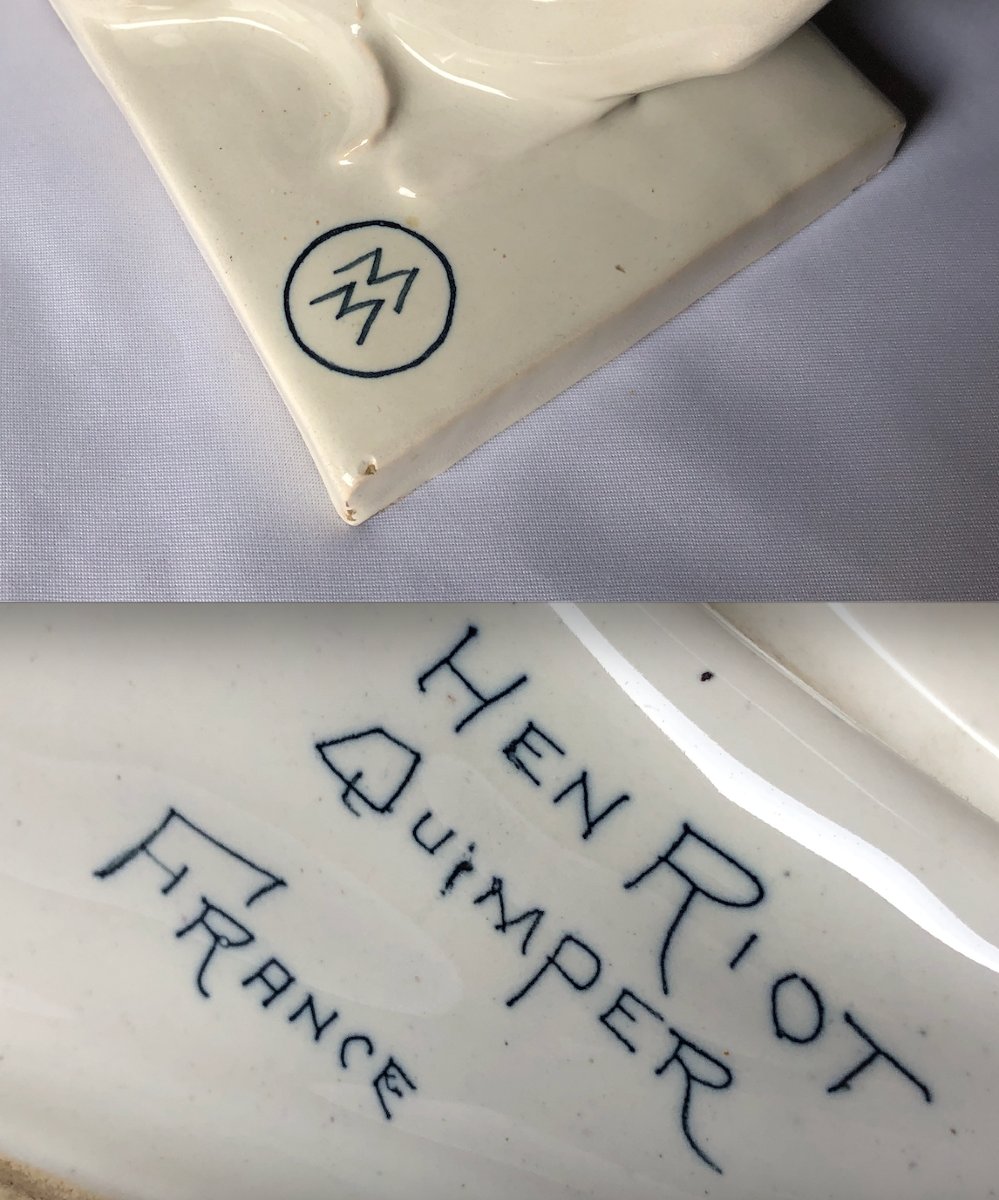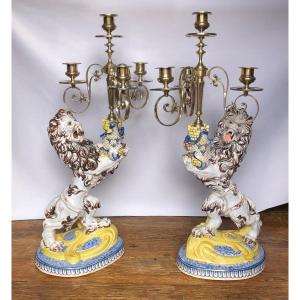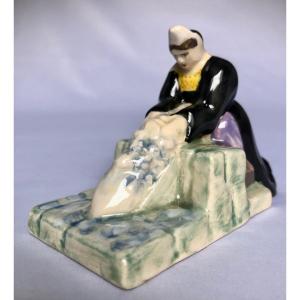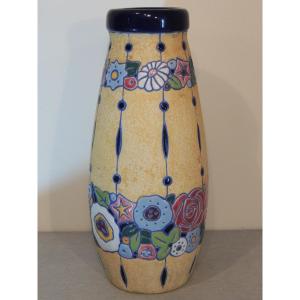This piece was created for Mathurin Méheut's solo exhibition "Sea and Forest," held at the Galerie Charpentier in Paris in December 1928.
This exhibition combined paintings and sculptures.
Among these works was "The Man with the Ray."
This piece will be on display at the Quimper Antiques Fair from November 7 to 9, 2025.
Mathurin Méheut (1882-1958):
Mathurin Méheut is an artist who needs no introduction in Brittany, so great is his renown there. And this is only fitting, given his love for this land. In 2013, he was honored by the Musée de la Marine in Paris, which paid him a vibrant tribute with an exhibition retracing his entire body of work as a painter, watercolorist, sculptor, and earthenware artist. The exhibition was extended due to its great success. The son of a craftsman from Lamballe, Méheut displayed artistic talent from a very young age and graduated brilliantly from the Rennes School of Fine Arts at the age of twenty. He then enrolled at the National School of Decorative Arts in Paris and studied under Eugène Grasset at the École Normale d'Enseignement du Dessin (Teacher Training College for Drawing). He quickly began working as a decorative painter for the prestigious magazine Art et Décoration. He then went to the Roscoff Marine Biology Station to illustrate Étude de la mer, flore et faune de la Manche et de l'Océan (Study of the Sea, Flora and Fauna of the English Channel and the Ocean). This book, published in 1913, brought him renown. In 1914, he traveled to Japan with the "Around the World" grant funded by the Albert Kahn Foundation. In Japan, he found confirmation of his iconographic choices, such as representing the essential with minimal means. His stay was interrupted by the general mobilization. As a combat painter on the Artois and Argonne fronts, he sketched the daily lives of his fellow soldiers. With his pencil or brush always in hand, he brought back a wealth of documents from this period. Demobilized in 1919, he retreated to the Bigouden region to try and recharge. For two years, he prepared his second solo exhibition at the Musée des Arts Décoratifs in Paris. He had been thinking about it since his return from Japan. This exhibition had to live up to the previous one in 1913. The works on display reflected his earlier tendencies and others that foreshadowed, both in their graphic style and subject matter, the Méheut of the 1930s and 40s. It was in the second part of the exhibition, dedicated to his native land, that Méheut would draw on his art to establish himself as the painter of Brittany. During the interwar period, Méheut was at the height of his career. He was known as a decorator, illustrator, and ceramicist. Immediately after the war, he began a collaboration of over thirty years with the Henriot potteries in Quimper, as well as with the Sèvres porcelain factory and Villeroy & Boch. Major shipping companies entrusted Méheut with the decoration of their finest ocean liners, ambassadors of a whole art of living. And finally, publishers continued to call upon him to showcase Brittany in Paris. He also had the opportunity to teach at several prestigious schools: first the École Boulle, from 1912 to 1913, then from 1919 to 1928, and the École Estienne. After a break of a few years to focus on his career, he returned to teaching during the Second World War, from 1941 to 1943, this time in Rennes, at the School of Fine Arts where he had been a student. Products associated with the artist


































 Le Magazine de PROANTIC
Le Magazine de PROANTIC TRÉSORS Magazine
TRÉSORS Magazine Rivista Artiquariato
Rivista Artiquariato